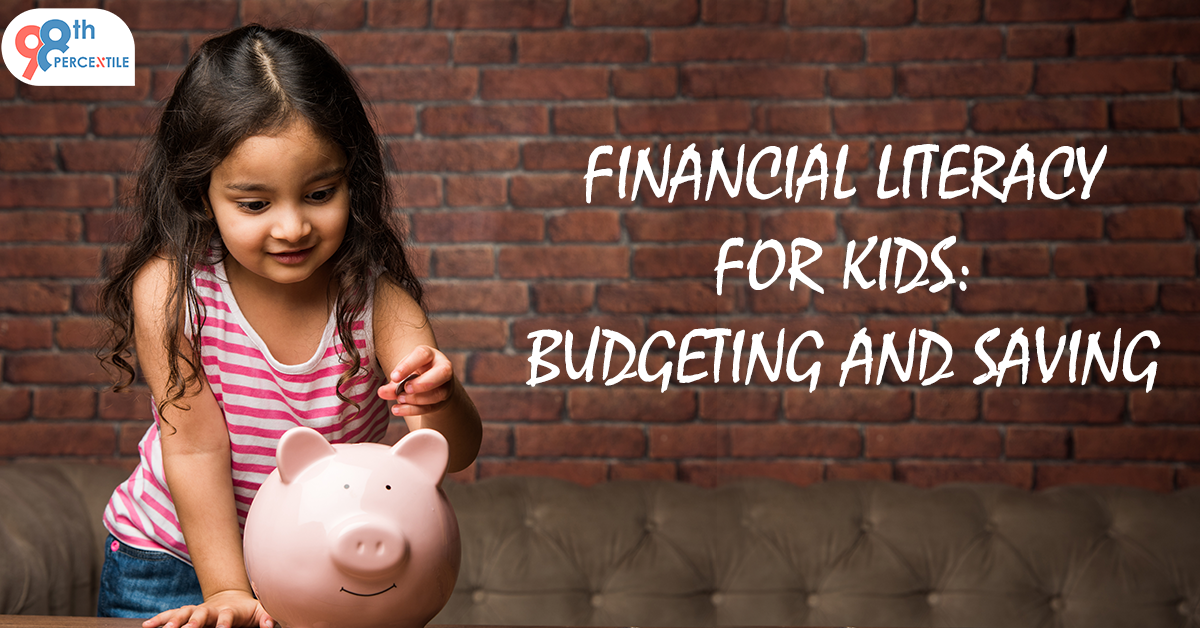In a world driven by financial transactions and economic complexities, instilling financial literacy in children is more crucial than ever. One of the fundamental aspects of financial education for kids is teaching them the basics of budgeting and saving. These skills lay the foundation for a lifetime of responsible financial management. In this article, we will explore the importance of introducing children to essential financial concepts and skills, focusing on the basics of budgeting and saving money.
The Need for Financial Literacy for Kids
Financial literacy is a skill set that empowers individuals to make informed and effective decisions about their finances. While schools typically cover academic subjects, practical life skills like budgeting and saving are often neglected. Teaching kids about money early on not only fosters a sense of responsibility but also prepares them for the financial challenges they will face in adulthood.

Understanding Budgeting
It involves setting goals, identifying your sources of income, tracking your expenses, and making adjustments as needed to ensure that you are living within your means and achieving your financial objectives. By budgeting, you can gain greater control over your money and make informed decisions about how to allocate your resources.
Teaching Kids the Basics of Budgeting
- Earning and Income: Begin by explaining the concept of earning and income. Help children understand that money is earned through work, whether it's through chores at home, an allowance, or later on, a job.
- Needs vs. Wants: Teach the distinction between needs and wants. Needs are essential for survival, while wants are things we desire but can live without. This concept lays the groundwork for prioritizing spending.
- Setting Goals: Encourage children to set financial goals, whether it's saving for a new toy, a gadget, or an experience. This helps them understand the value of delayed gratification and the satisfaction of achieving a goal.
- Creating a Budget: Introduce the concept of a budget by explaining that it's a plan for managing money. Help them create a simple budget with categories like savings, spending, and giving. This can be a visual representation, such as a pie chart or a simple list.
- Tracking Expenses: Teach kids to keep track of their spending. This could be through a physical ledger, a digital app, or a simple notebook. This practice helps them become aware of where their money goes and make adjustments if needed.
- Adaptability: Emphasize that budgets are not fixed and can be adjusted as circumstances change. This teaches kids flexibility and the importance of adapting their financial plans to different situations.
- Understanding Saving: Saving money follows financial literacy. It involves putting money aside for future use rather than spending it immediately. Teaching kids about saving inculcates a sense of discipline and responsibility regarding their finances.
Teaching Kids the Basics of Saving
The Importance of Saving: Explain to children why saving is essential. Discuss future goals, emergencies, and the peace of mind that comes with having a financial cushion.- Differentiating Saving and Spending: Help kids understand that saving money is different from spending it. Encourage them to set aside a portion of their income for savings before considering spending on wants.
- Types of Savings: Introduce different types of savings, such as short-term savings for immediate goals and long-term savings for larger goals like education or a future home.
- Interest and Growth: Simplify the concept of interest by explaining that when money is saved, it can grow over time. This introduces them to the idea of making their money work for them.
- Opening a Savings Account: As children get older, consider opening a savings account for them. This practical step helps them experience banking processes and learn about interest earned on savings.
- Delayed Gratification: Teach kids the value of delayed gratification by showing them that saving for a more extended period can lead to more significant rewards.
Practical Tips for Parents and Educators
- Lead by Example: Children often learn by observing. Discuss your budgeting and saving practices openly with your children.
- Make it Fun: Incorporate games and activities that make learning about budgeting and saving enjoyable. Board games, role-playing, and interactive apps can make the learning process engaging.
- Use Real-Life Scenarios: Whenever possible, involve children in real-life financial situations. This could include grocery shopping, comparing prices, and discussing budgeting decisions.
- Encourage Questions: Addressing their queries helps demystify financial concepts and builds their confidence.
- Celebrate Achievements: Celebrate when children reach their savings goals. Positive reinforcement encourages them to continue practicing good financial habits.
Financial literacy is a lifelong skill that is best cultivated from a young age. Teaching kids the basics of budgeting and saving not only equips them with practical skills but also fosters a healthy attitude toward money. By instilling financial responsibility early on, we empower the next generation to navigate the complex financial landscape with confidence and competence. As parents, educators, and caregivers, we play a vital role in shaping the financial future of our children, and it begins with the simple yet powerful lessons of budgeting and saving.

 Students/Staff
Students/Staff Parents
Parents ElevatEd
ElevatEd













